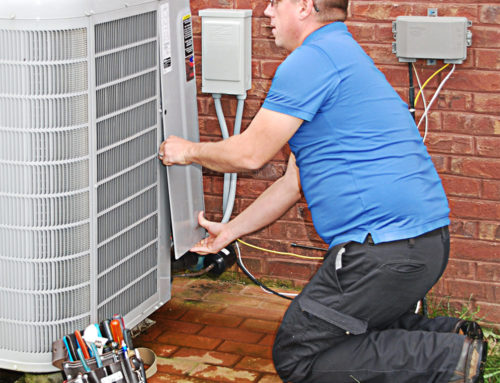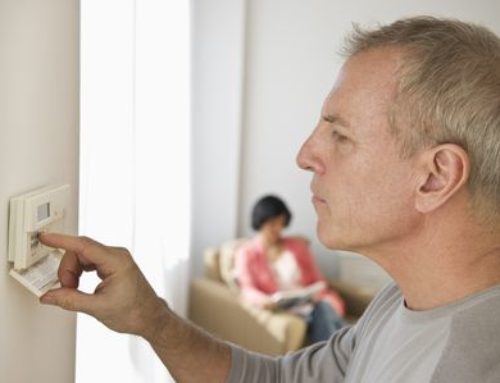This time of year is naturally dry, so the drying process that furnaces have on indoor air makes the consequence of dry air even worse. The good news is that there are plenty of ways to increase the humidity to improve your health and that of your home. HVAC companies have successfully tackled the problems of dry air, and there are also simple ways you can increase the humidity level indoors.
The healthiest ranges lie between 30 and 50 percent. At those levels, you’ll experience fewer health problems related to your skin and respiratory system, and seasonal bacteria and viruses won’t spread as easily. Your home and its contents will be better off, as well, since the wood won’t dry out and electronics won’t be harmed by electrical shocks.
Signs of Low Humidity
Dry air has many physical signs. Static electricity occurs at humidity levels below 30 percent. Your skin starts to dry out and itch and you might feel as if you’re coming down with a cold. Your eyes could feel dry or itch, your throat feels raw, and your nose may be irritated.
Besides relying on your senses, you can stay ahead of the humidity levels indoors by using a hygrometer. This inexpensive device measures the relative humidity. It will give you an idea of how dry your air is. When the moisture in the air drops below 30 percent, you’ll know it’s time to increase the humidity.
Your options are to go with systems that work with your heating system or choose small, portable devices. There are also a few things you can do in your home to increase humidity.
Humidifiers
A central humidifier is the easiest and most effective way to raise the humidity level indoors. HVAC companies attach these appliances to furnaces. The humidifiers send water vapor through the air ducts. They’re controlled by a humidistat, which is similar to a thermostat, to automatically manage the amount of humidity in the air. You can set it at the level comfortable to you and it will maintain it throughout the heating season. They seldom need HVAC repair, since they use just a handful of parts.
Central humidifiers use the principles of evaporative cooling. They blow air through a pad soaked with water to raise humidity levels. Heating companies run a water line to the humidifier and a drainline into your home’s pipes so that they drain and fill automatically. The fresh water flows over the absorbent pad and the air blowing through it evaporates some of the water.
Portable Humidifiers
Portable humidifiers are also available, which make sense if your home is small. These devices sit on the floor, counter, or table. You may find portable humidifiers at the drug store in the same aisle as the cold and flu remedies since increased humidity eases nasal and lung congestion. Big box stores also sell these devices. You’ll find them as steam humidifiers, ultrasonic devices, or those that send out cool mist.
Each has its own advantages, but all require daily filling and weekly cleaning to prevent bacterial deposits that could harm your indoor air quality and risk your health. They have a shorter lifetime in hard-water environments or require expensive distilled water.
Portable humidifiers create low-level noise and could be tripping hazards depending on where they’re placed. They do not last nearly as long as a central humidifier and over the long run, cost more and use far more energy.
Managing Humidity with Fans
In the summer, you’re encouraged to use bathroom and kitchen fans to pull out the excess humidity in the air. In the winter, heating companies suggest you leave them off except to freshen the air. When the indoor air is too dry, all the steam that cooking and bathing create is helpful for your home’s air quality and your comfort.
Other Ways to Increase Humidity
Filling your home with houseplants helps increase humidity levels, especially if you set the pots in plastic pans with raised edges. You can add a layer of pebbles, set the plants on top and water them from the top. Between watering, check the moisture level in the tray and add more so that there is always water in the pan that will evaporate into the air.
Dubious Ways to Increase Humidity
- Simmering a pot of water or a tea kettle on the stove also increases humidity levels, but does pose a safety hazard since it’s easy to forget that the stove is on. When all the water in the pan evaporates, the pan will get very hot and could start a fire.
- People with electric dryers sometimes redirect the exhaust hose into the interior, which will easily raise humidity levels, since dryers create a good deal of humidity. However, you cannot do this with a gas dryer, since the exhaust air contains carbon monoxide and other toxic gases that are byproducts of burning natural gas or propane.
If you have an electric dryer and want to do this, avoid using perfumed laundry soap and dryer sheets. The perfumes in these products have volatile organic compounds (VOCs) that are respiratory irritants at best and toxic gases at their worst. Laundry detergents and fabric softeners are available without scents.
Slow But Sure Ways
If you want to save energy and increase the indoor humidity at the same time, simply line dry your clothes indoors instead of using the dryer or hanging them outside. Some people even hang wet towels in overly dry rooms. If you do this, be sure the towels aren’t dripping, which could harm the surfaces on which the water falls.
Self-Help for Dry Conditions
Besides increasing the humidity in the air, you can make yourself feel better in the interim by:
- Using skin moisturizers after bathing and hand washing.
- Using gentle bath soaps to avoid stripping all your body oils from the skin.
- Don’t take overly hot showers or baths that can dry your skin even more.
- Using saline nasal sprays or a netti pot to clear your nasal and sinus passages. If you make your own sprays or netti pot flushes, be sure you use sterile water to avoid bacterial infections.
- Drinking lots of water daily.
Bottom Line
Living in a bone-dry environment in the winter isn’t healthy for you or your home. Cracked skin leads to infection and dry air fosters the spread of viral and bacterial diseases. The damage to your home can be extensive in terms of wood cracks and fried electronics, including HVAC repair. All these conditions are easy to avoid simply by increasing the humidity levels.
If you are worried about your heating, cooling and HVAC system, call the professionals at Starnes Heating & Cooling. Our professional and friendly team is here to help and advise you on the best possible next steps. We’re ready to answer your questions about costs, options, time frames and recommendations to repair or replace your unit. Give us a call at your convenience, or head to our Contact page and send us an email.






I’m glad you mentioned having houseplants to help with the humidity levels. It gets really dry where I live and now my knuckles are cracking. I’ll have to make sure my HVAC system is also working to make the air more bearable.
I am so thankful for this guide because it helped me learn how to combat dry indoor air. It has all the tips you need and is very helpful in getting rid of dry indoor air problems. I highly recommend this guide if you are experiencing dry indoor air or have a family member who does!
Because the air is inherently dry at this time of year, the drying effect of furnaces on indoor air exacerbates the problem. The good news is that there are a variety of techniques to boost humidity in your house and improve your health. Thank you!